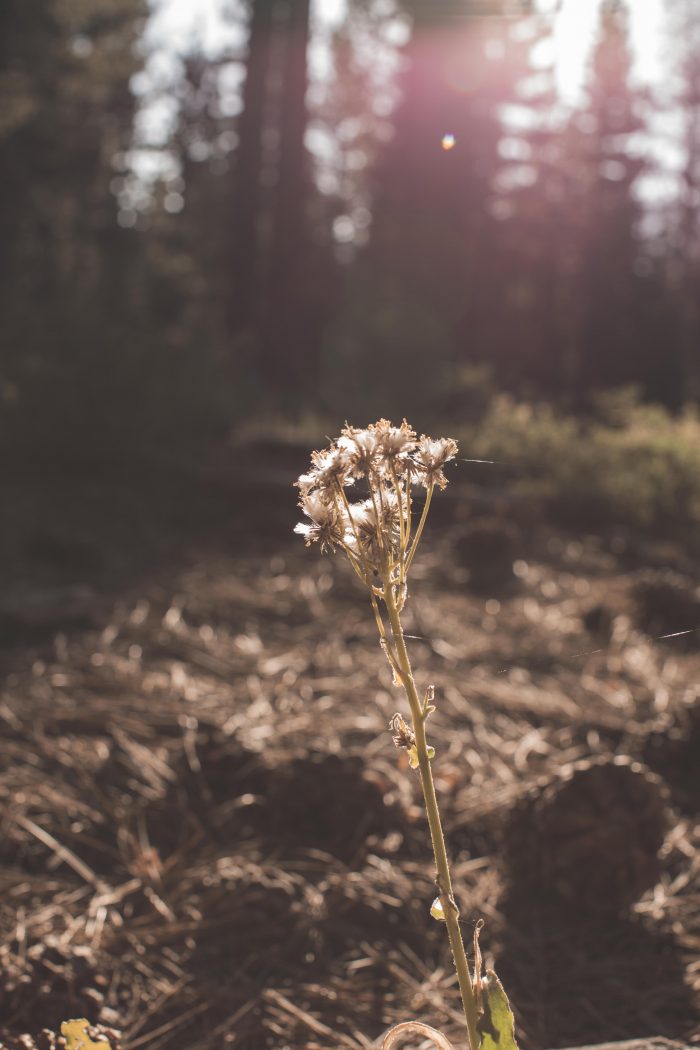We live in a time where things can be rather overwhelming. We are faced with many challenges from our political climate, the destruction of our environment, and even our interests in personal and emotional development. Just like the next person, I have visited the place of such weariness when looking in the face of all that I want to fix. A teacher of mine used to tell us that instead of trying to cover the world in leather, to start with our own two feet. In other words, work with what’s in front of you first. Take care of your little piece and allow that pure intention for healing to ripple out.
My dear friend and I run an educational program, The Creative Wild, for children aged 5 – 10 that takes place entirely outdoors. A couple days a week, for three hours a day, we gather together with our group of kids in the Tahoe forest. We immerse ourselves in our natural surroundings and release any agenda or plan as we allow the environment to be our guide. Children are naturally inclined to explore and investigate. We get up close and personal with the inner workings of the forest and are often compelled to leave our creative mark in the form of nature art or, in this particular case, shelter.
Toward the end of our fall session forest classes, a couple of new students joined our group. Neither of them had ever built a fort before. One of the students, traveled 3 hours round trip once a week to be a part of our group. The other had recently moved from San Francisco. They both wanted to create shelter in our little stretch of forest.
The entire group banded together, some gathering sticks for the outer structure, others collecting soft white fir needles for the bedding, and a few honing in on the tiny details that make a fort a home. Quickly they fell into step with one another – distributing the workload, offering insights, and literally whistling while they worked.
While the cohesiveness of the group has made itself known multiple times throughout my experience in our forest “classroom,” I couldn’t help but be warmed by this community of children and be re-inspired to continue to do what we do here in the woods.
As fall turned into winter and our session ended, my own children and I have traveled back to the section of forest where these forts are. My children check in on the structures, making sure everything is as it is supposed to be – making repairs and modifications, testing the comfort of the burrow that is now covered with snow, and remarking how exciting it will be when the fort’s “owner” returns to see it in the winter months.
The children in our group have formed a bond with “our” place and along with their classmates, have felt belonging with the places we explore as well as with the flora and fauna surrounding them. It is in this bond, that true stewardship blossoms. When children are given an opportunity to feel grounded and safe in a space, they feel compelled to care for it.
I was trained in Nature Immersion Education by Erin Kenny of Cedarsong Nature School in Vashon Island, WA. Erin has since passed on, but her words have stayed with me and in turn have created the foundation of our little forest project.
“When we feel a personal connection to even a small part of the planet, we will work harder to make sure the greater part is protected.”
My experience in the forest, connecting children with the land helps to bring me back the focus. In a time where the magnitude and multitude of “problems” to “fix” in our world feels unsurmountable, we can start where our hands are. Children are excited and honored and empowered to care for their little piece of earth because it offers them something essential to their very being – belonging and community.
In the forest, the children fall collectively into step with one another over the shared bond they have with the space. As a group and individually, we get down to necessity pretty quickly. Out there, it is interesting how we tap into our instinctual ways and easily shed the things that aren’t as important. I have seen that the children quickly gravitate toward this bond with nature because it is a symbiotic one. They crave an understanding of how they can survive in this place – learning about the edible plants, becoming intimate with the water source, setting up a safe space to be held, and working together as a team member within their community of forest friends. When there are no walls, things get down to basics and it is in this simplicity that needs can be met and a sense of security discovered.
 Share on bsky
Share on bsky






Read 0 comments and reply